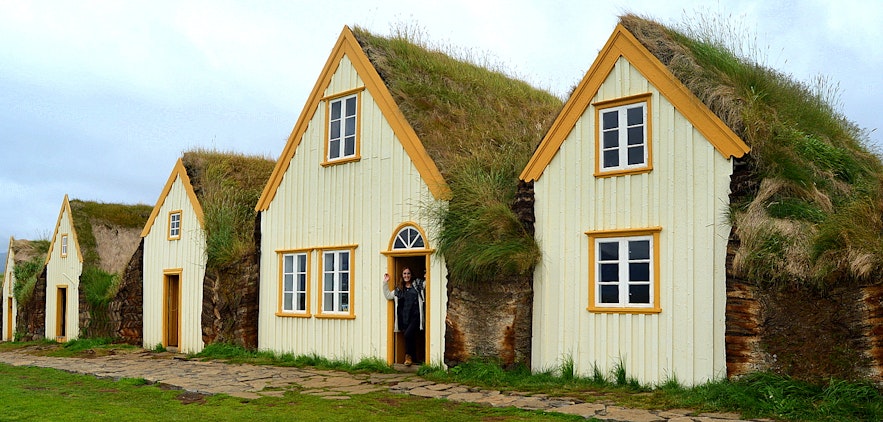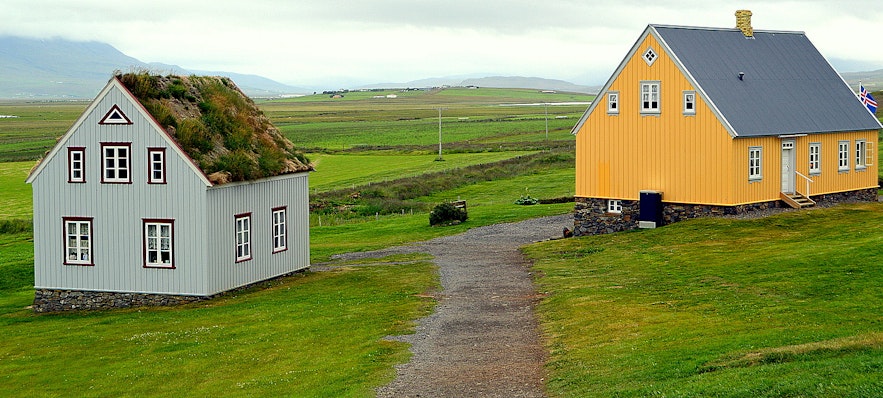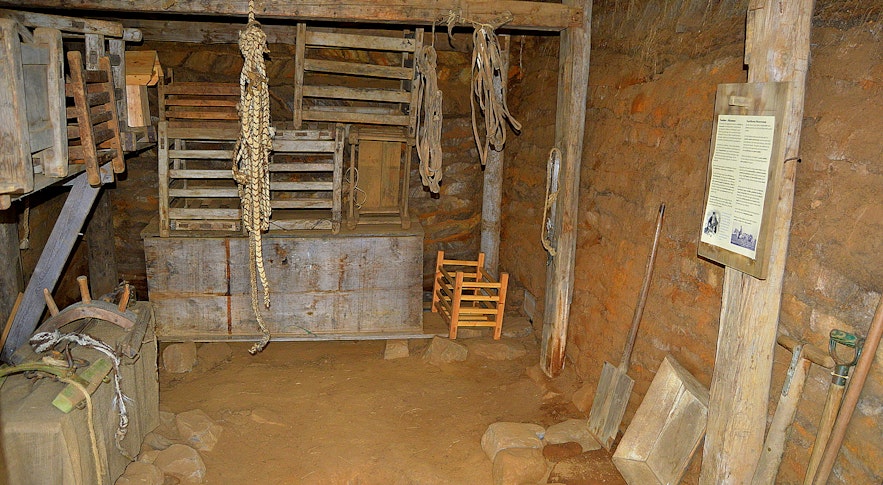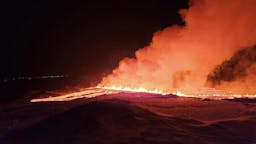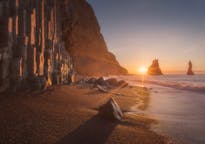
The Historic Glaumbær Turf House in North Iceland

As you might have noticed from my previous travel-blogs, then I adore turf houses. Whenever I travel around Iceland I seek out turf houses and turf churches, they are just so characteristic of my country.
Everybody lived in a turf house in Iceland, both rich and poor and there are still several turf houses in Iceland, most of which have been preserved.
There is a lovely historic turf house in Skagafjörður in North Iceland, called Glaumbær farm, and should not be missed while travelling in this area.
Top photo: Glaumbær turf House in North Iceland
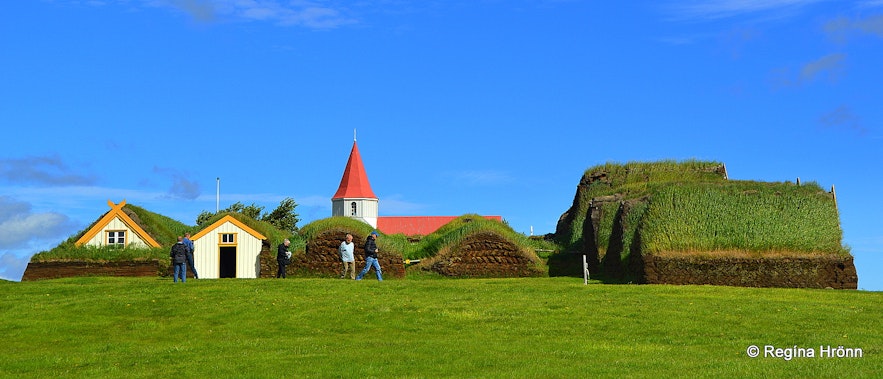
Glaumbær turf house in North Iceland
A farm has stood on this site since the settlement of Iceland in the year 874 - give or take a few years, and people lived in Glaumbær turf house until 1947.
The present farmhouse consists of 13 buildings and the "newest" addition to the turf house was built in 1876-1879. The oldest parts of the turf house date back to the mid-18th century.
Glaumbær turf house
In 1947 Glaumbær was declared a protected site and is now owned by the National Museum of Iceland. It has been run as a museum by the Skagafjörður Heritage Museum since 1952.
If you visit the Glaumbær turf house and have a look inside, you can see how life in Iceland was back in the 18th and 19th centuries.
Glaumbær is quite a historic farm, as here lived Snorri Þorfinnsson and his parents in the 11th century (around 1010). Snorri is most likely the first European child to be born in America while his parents were on exploration there long before Columbus discovered America.
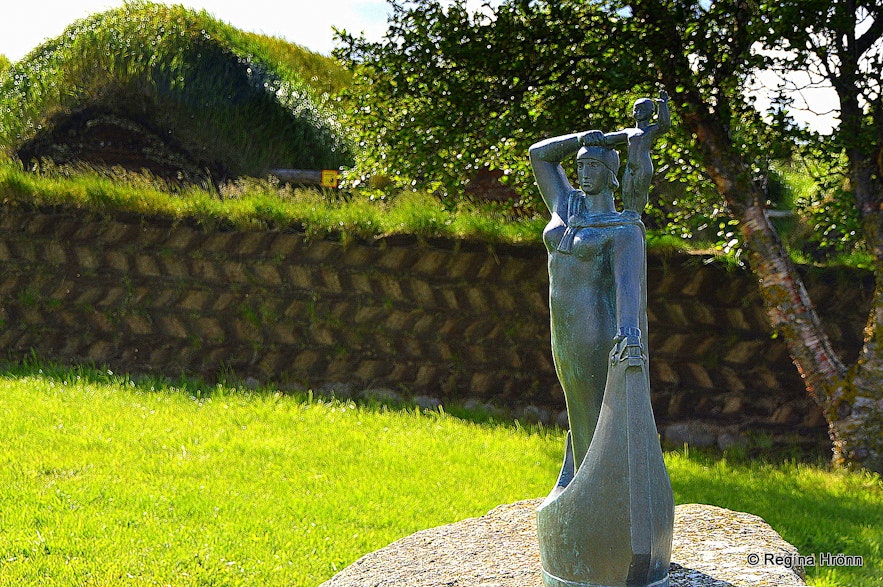
The statue of Guðríður at Glaumbær was made in 1938 by Ásmundur Sveinsson
Snorri's mother, Guðríður Þorbjarnardóttir, was the widow of Þorsteinn, who was Erik the Red's son and the brother of Leif the Lucky, who discovered America.
Guðríður then married Þorfinnur karlsefni and had Snorri by him in what is now called Newfoundland. Guðríður had emigrated to Greenland with her parents, and Guðríður and Þorfinnur meant to settle in Vínland as they called it back then.
But there were conflicts with the locals so after one winter they had to return back.

Guðríður is considered to be the most widely travelled woman in Iceland in the middle ages. She made 8 sea journeys and crossed Europe twice on foot.
You can read more about these people in the Saga of Erik the Red and Grænlendingasaga.
So one can see that some very well-known characters in Icelandic history lived on Glaumbær farm.

At Laugarbrekka on the Snæfellsnes peninsula, where Guðríður was born, you will see the same statue of Guðríður and her son.
I have written about these people in another travel-blog: The Historic Laugarbrekka on the Snæfellsnes Peninsula and Guðríður Þorbjarnardóttir.
Þorfinnur karlsefni was from Reynistaður close by Glaumbær, which was back then called Staður in Reynines, and when they returned back to Iceland they lived at Reynines for a while.
It is not certain when they started living at Glaumbær, but after his father had passed away, Snorri lived at Glaumbær and built a church there.
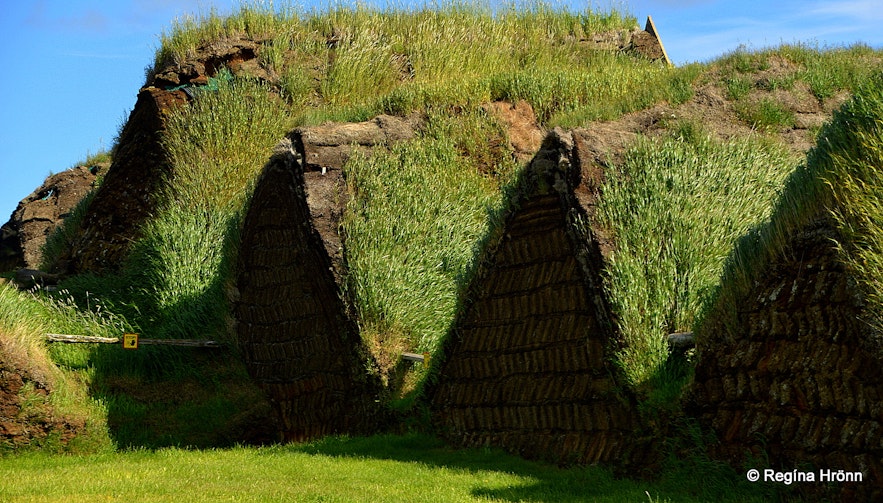
Glaumbær turf house
At Glaumbær you will also find 2 timber houses on the museum ground, one is called Gilsstofa and the other one Áshús.
Gilsstofa contains the offices of the museum and a museum store and in Áshús there are exhibitions on housekeeping in the first decade of the 20th century.
Gilsstofa and Áshús
Gilsstofa is a reconstruction of a house from 1849, which shows what a wooden sitting room was like in the middle of the 19th century.
These kinds of houses were added to turf houses before wooden houses were built in the late 19th century. They could be moved between farms and Gilsstofa was moved 6 times.
Áshús was built in 1884-1886 and shows the building style that took over following the turf houses.
Glaumbær turf house
Viking ruins have been discovered at Glaumbær, some 150 meters east of the current turf farm.
A 30-meter-long Viking-age longhouse from the 11th century was found, as well as some other smaller structures.
It is lovely visiting Glaumbær, just like stepping back in time, so I recommend stopping there and having a look around.
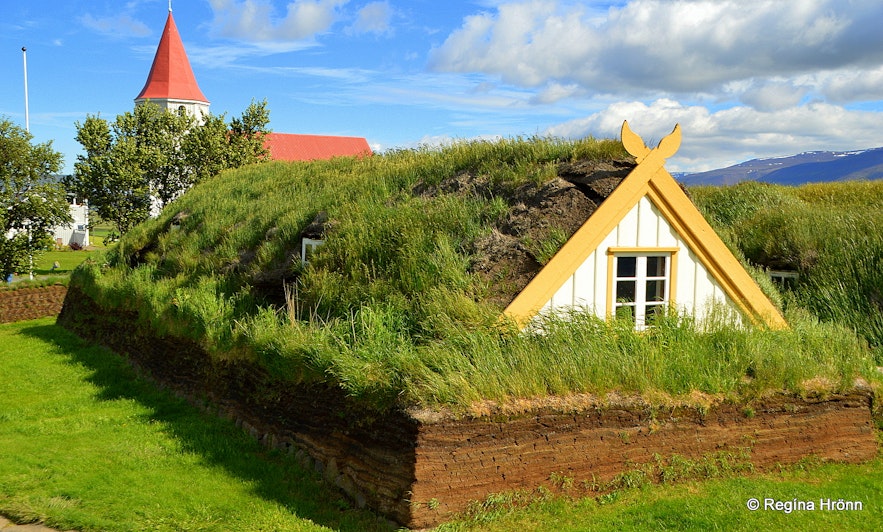
Glaumbær turf house
For opening hours and admission fees check the Glaumbær farm website.
There is a limit though to how many people can fit in a turf house at the same time and how much intrusion these old turf houses can handle, so let's treat them with respect and tread lightly.
Here is the location of Glaumbær on Google maps.
If you are interested in turf houses then I have written another travel-blog:
A List of the beautiful Icelandic Turf Houses, I have visited on my Travels in Iceland

Glaumbær turf house
I have written 2 other travel-blogs about Skagafjörður:
The Bloody Viking Battles in Skagafjörður, North-Iceland
Víðimýrarkirkja Turf Church in Skagafjörður - is it the most beautiful of them all?
Have a lovely time at Glaumbær and in Skagafjörður :)
其他有意思的博客
冰岛最浪漫的角落
对于很多人,遥远的冰岛有着世界尽头的神秘,有着区别于巴黎、马尔代夫、自成一体的浪漫。没有埃菲尔铁塔和蒂凡尼,没有热带沙滩,而是在冰川、火山、苔藓地的背景下蜜月旅拍、婚拍,甚至举办一场冰岛婚礼。来冰岛旅行,多是要跨千山万水、飞跃大洋大陆,很有一点“万水千山陪你走过”的史诗感。难怪很多人说,光是冰岛二字,就足够浪漫了。 冰岛虽然不大,但是地貌极其丰富,不同的自然景观自然有不同的气质。这一篇,就挑阅读详情从极光观测到摄影-到底该不该来冰岛看极光
很多朋友都想来冰岛看极光,但是冰岛到底适不适合看极光呢?几月、什么季节能看到极光?是不是一定要参加北极光旅行团?如何能拍摄出美丽的极光照片呢?在冰岛住了好几年了,从刚开始逢极光必出门,到如今家里阳台就能看极光,我对在冰岛看极光的了解和经验,也算得上大半个专家了,且听我娓娓道来吧。 到底该不该来冰岛看极光呢?最坦诚的答案是,不要只为了看极光而看极光。 极光原理 太阳活动→太阅读详情
迷失冰岛的米湖游览推荐|不只有温泉的地热宝藏区
我在冬夏秋均到访过米湖,看过米湖的不同面。一直以来,米湖到底值不值得去是很多游客争论的问题。有些人觉得这里是来冰岛旅行的必去目的地,有些人则说米湖“太丑了”,连照片都不想多拍几张。那米湖到底值不值得来呢?到底怎么玩呢? 米湖的风景 北部的米湖,因地理位置相距首都雷克雅未克略远,很多来冰岛的短途游客选择放弃,其实米湖应该是和黄金圈、南岸沿线至冰湖齐名的冰岛景色,这里冷热相融,可谓最冰岛,尤其阅读详情

将冰岛最大的旅行平台下载到您的手机上,在一个App中管理您的整个行程
使用手机摄像头扫描此二维码,点击链接,即可将冰岛最大的旅行平台添加到您的手机中。添加您的电话号码或电子邮件地址以接收包含下载链接的短信或电子邮件。

